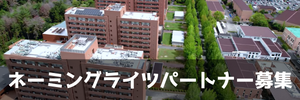(English announcement can be found in the latter half of this notice.)
広島大学バイオマスプロジェクト研究センターと中国地域バイオマス利用研究会の共催で広島大学バイオマスイブニングセミナーを開催しています。バイオマスに関する基本的な考え方から最先端の情報までをカバーして、この地域におけるバイオマスの活動に資することを目的とするものです。第67回を以下の日程で開催しますので、ご参集下さい。
日時
2018年9月26日(水)16:20~17:50
会場
広島大学東広島キャンパス工学部115講義室
(従来開催の110講義室より変更となっております。ご注意下さい。)
https://www.hiroshima-u.ac.jp/eng/access/lectureroom
https://www.hiroshima-u.ac.jp/eng/access/building
https://www.hiroshima-u.ac.jp/access/higashihiroshima
プログラム
講演: 広島大学大学院工学研究科 M2 Kunassanan SIRIBUNYAROJ
「グリシンの超臨界水ガス化における窒素挙動」
地球温暖化を抑制するために、化石燃料の代わりにバイオマスなどの再生可能エネルギー源からエネルギーを使用することが現在求められています。窒素化合物を含むタンパク質は常にバイオマスに存在するため、この研究では、超臨界水ガス化におけるアンモニア回収およびガス生成を解明するためにグリシンが使われています。グリシンを選んだ理由は、グリシンはもっともシンプルなモデル化合物です。この実験は管型反応器が使われています。実験条件中は温度が390,420、450℃、滞留時間が5-60s、原料濃度が1wt%、圧力を25MPaに保ちます。超臨界水ガス化における窒素の挙動とガス生成の温度と滞留時間の影響が解明されました。この実験によると、グリシン分解物における窒素化合物のほとんどがアンモニアおよびメチルアミンとして存在していました。この実験では、二酸化炭素、水素が主要な気体生成物でした。高温で少量のメタンが発生しました。
講演:山口大学創成科学研究科機械工学専攻 教授 田之上 健一郎
「バイオマス充填層のトレファクションにおける炭化特性に関する研究」
本研究では、竹、ベイマツ、バークの3種類のバイオマスについて成分分析、高位発熱量測定、トレファクション中の熱物質移動測定を行いました。その結果、竹の高位発熱量が他のバイオマスに比べて大きくなり、Ts = 623 Kで最大の高位発熱量を持つことが分かりました。また、竹中に含まれるキシランの発熱反応により、セルロースの一部が分解してトレファクション中のガス生成量は定常値を持つことが分かりました。ベイマツ、バークのトレファクションに関しては、それぞれ、マンナンやリグニンの熱分解に支配されることが明らかとなりました。
司会・解説:広島大学大学院工学研究科 教授 松村 幸彦
なお、18:00より意見交換会(参加費 800円)を開催します。ご都合の付く方はこちらにもご参加下さい。
The 67th Hiroshima University Biomass Evening Seminar
(The 40th Hiroshima University ACE Seminar)
Biomass Project Research Center, Hiroshima University, and HOSTY Association are co-organizing the Hiroshima University Biomass Evening Seminar. This seminar covers topics from the fundamentals of biomass to the latest information so that it can contribute the activities on biomass in this district. The 67th seminar will be held as follows. Please join.
Date & Time
Wed.26 Sep., 2018 16:20-17:50
Place
Engineering 115 Lecture Room, Higashi-Hiroshima Campus, Hiroshima University
https://www.hiroshima-u.ac.jp/eng/access/lectureroom
https://www.hiroshima-u.ac.jp/eng/access/building
https://www.hiroshima-u.ac.jp/access/higashihiroshima
Program
Lecture: Kunassanan SIRIBUNYAROJ
M2 Student, Graduate School of Engineering, Hiroshima University
“Nitrogen behavior in supercritical water gasification of glycine”
To reduce global warming problems, using energy from renewable source such as biomass instead of fossil fuel is now being sought. Since protein that contain nitrogen compounds is always found in biomass, in this study, glycine, which is the simplest amino acid, was chosen as representative model protein for investigating the simultaneously recovery of ammonia and gas generation under supercritical water gasification. A tubular flow reactor was employed and glycine was gasified in supercritical temperature (390-450℃) with fixing pressure at 25 MPa and glycine concentration of 1.0 wt% to observe the effect of residence time (5-60s). The behavior of nitrogen and gas production from glycine during the SCWG process were investigated. According to this experiment, most of nitrogen compounds in glycine are in form of ammonia and methylamine. The mainly gaseous that obtained from glycine decomposition were composed of H2, CO2. Small amount of CH4 was generated at high temperature.
Lecture: Kenichiro TANOUE
Professor, Department of Mechanical Engineering, Graduate School of Sciences and Engineering for Innovation, Yamaguchi University
“Study on characteristics of carbonization during torrefaction in the packed bed of biomass”
In this study, we conducted component analysis, measurement of high heating value after torrefaction and measurement of heat and mass transfer during the torrefaction in three types of biomass powder: Bamboo, Douglas fir and Bark. It was found that the high heating value (HHV) of Bamboo had the maximum value when the torrefaction temperature was 623 K. The HHV of Bamboo was larger than that of Douglas fir and Bark. The gas flow rate during torrefaction of Bamboo had a constant value because cellulose decomposition could be occurred partly after exothermic decomposition of Xylan. It was suggested that the torrefaction of Douglas fir and Bark would be controlled by thermal decomposition of Mannan and Lignin, respectively.
Chair&Commentary: Yukihiko MATSUMURA
Professor, Graduate School of Engineering, Hiroshima University
We will hold the discussion meeting from 18:00 (800 JPY needed). Join this meeting too, if you are available.


 Home
Home




